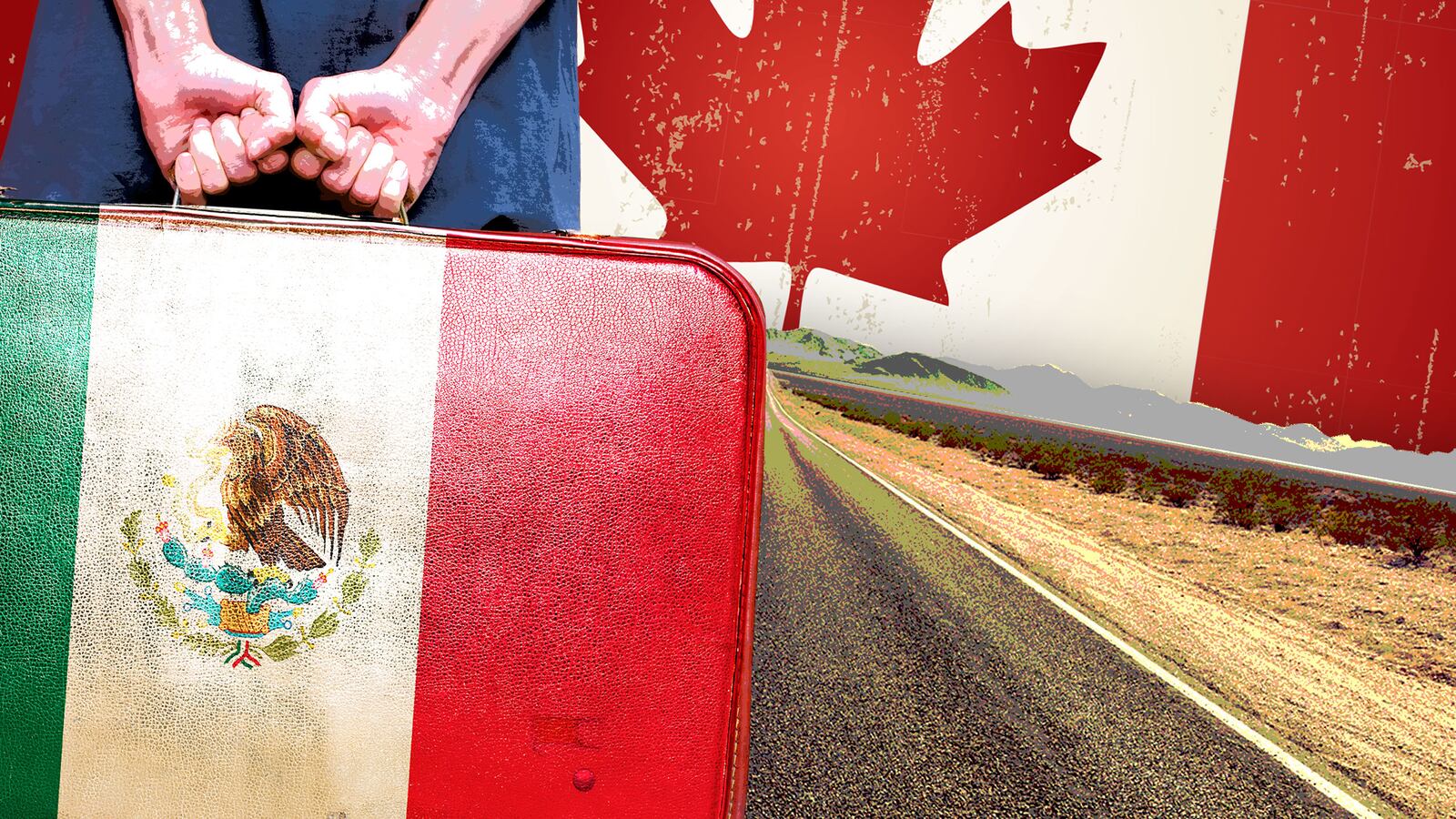TIJUANA, Mexico—"This move will make it easier for our Mexican friends to visit Canada, while growing our local economies and strengthening our communities," Canadian Prime Minister Justin Trudeau said last June when the Canadian government announced it would be lifting visa requirements that had been in place for Mexican citizens since 2009.
Mexico, in turn, agreed to lift the bans on Canadian beef imports, which were put in place in 2003 amid concerns about mad cow disease.
The announcement followed a meeting with Mexican President Enrique Peña Nieto just before the annual trilateral Three Amigos Summit in Ottawa, during which the two leaders got together and shook hands so awkwardly with President Barack Obama that everyone wound up laughing.
At the time, a Donald Trump presidency seemed unlikely, if not impossible.
But then came the surprising night of the American election, November 8.
Since December 1, when the promise of the Two Amigos went into effect, all that has been required of Mexican citizens wishing to visit Canada, if arriving by air, is to fill out a quick online travel authorization form and pay a fee that’s roughly $5. If they come by land or sea, according to the Canadian government website, they don’t even need the online form, just “proper identification to show to the border services officer when you enter Canada.”
As a result of this relaxation, more than 72,000 Mexicans have been authorized entry during this short period, many of them coming from the United States where the idea of “amigos” has been replaced by the Trumpian notion of “bad hombres.”
To be sure, the Canadian door is not quite as wide open as the numbers suggest.
In just over two months more than 440 Mexicans were detained while entering Canada, a sharp increase from the total number of those detained throughout 2016, which was just 410 for the entire year. More than 300 others were turned away at Canadian airports, Reuters reported. But this is obviously a tiny percentage.
Those authorized to travel to Canada are expected to leave the country after a maximum stay of six months. But, as Canadian immigration attorney Colin Singer noted, during the screening interview with border personnel “red flags may come up, which may be indicative of whether or not they plan to remain in the country past authorization.”
Although a precise breakdown of who is being detained for what is not yet available, there has been some official speculation about the risks of a Mexican influx.
According to a report by the Canadian Border Services Agency obtained by Postmedia News before the change in visa policy went into effect, “the visa lift will make travel to Canada easier in order to establish or strengthen existing cartel smuggling chains.”
The document suggests the cartels will "expand their presence in Canada by sending operatives and recruiting local airport or marine port workers with ties to Mexico."
Specifically, there is concern that devastating narcotics like the synthetic opioid fentanyl, which is wreaking near-epidemic havoc on communities across Canada, will begin to enter the country through alternative channels.
Currently, fentanyl comes into both Canada and Mexico from China, the dangerous chemical compound's primary manufacturer, but authorities are concerned about Mexico "serving as a transshipment point for fentanyl precursors” and Mexicans participating in thriving transnational smuggling operations.
But the concerns, while not unreasonable, remain hypothetical.
In general terms, Canada is now detaining those whom authorities consider pose a threat or lack proper identification, and those who seem unlikely to reemerge voluntarily for a future immigration hearing.
“They may be detained if they are deemed a flight risk and if it’s believed they may abscond and go underground,” says immigration attorney Singer. Otherwise, the vast majority of those seeking temporary entry are being granted access.
In addition to visitor requests, as Singer noted, the current arrangement is likely to lead to an increase in refugee claims from Mexico. In 2009, the number of Mexicans seeking refugee status in Canada rose to a peak of nearly 7,600 migrants, which is part of what prompted the visa restrictions in the first place.
“We’re likely to go down the same path as before, which could create a problem for the current government,” says Singer. “That’s my hunch for what we’ll see once we have the numbers in hand.”
As managing partner of Immigration.ca, which has been online since 1994 and lays claim to the title of “first immigration website in Canada,” Singer has long been an outspoken proponent of the country “temporarily abrogating its participation” in the bilateral Safe Third Country Agreement, a policy by which migrants are expected to claim refugee status in their first country of arrival.
Currently, undocumented immigrants fleeing a new era of hostility in the U.S., for instance, would not be able to claim refugee status in Canada because they would be expected to be processed in the first “safe” country where they landed—which, technically, would be the United States.
“But the American refugee system is notorious for its flaws and perils,” Singer argues. “In theory the U.S. is supposed to have a fair system, but in practice you can see that Canada’s is much kinder, the hearings are timelier, and we have a lower volume of detentions, especially of the sort that separate families.”
“If they’ve somehow managed to come through No Man’s Land and avoid proceedings in the U.S. they may still sometimes be able to claim refugee status in Canada,” says Singer, but there are no guarantees.
A recent petition with more than 40,000 signatories in Canada states that for many people “remaining in Trump’s America is unsafe.” It argues that the Safe First Country Agreement “is the reason refugees put their lives at risk trying to cross the U.S.-Canada border secretly rather than going through official channels”—a trek that may be rewarded with frostbite or worse.
Yet, despite increased calls for a reevaluation of Canada’s participation in this bilateral agreement with the United States, it is clear that immigration in Canada—as is the case in the U.S.—remains a contentious and divisive issue.
According to a recent Reuters/Ipsos poll, when asked about the newly arrived, 48 percent of the Canadian respondents said their country should "send these migrants back to the U.S." Only 36 percent said they should be allowed to remain in Canada.
Similarly, 46 percent believed Prime Minister Trudeau was mishandling the situation, whereas only 37 percent agreed with his decisions—this despite Trudeau’s 59 percent overall approval rating.
Even so, the trend of Mexican emigration to Canada—from the United States and from Mexico itself—is likely to grow. As one migrant in a Reynosa shelter, Cenobio Rita, told Reuters, "For those without documents, I think [the United States] is over.”
“Now it's Canada's turn,” he said.






